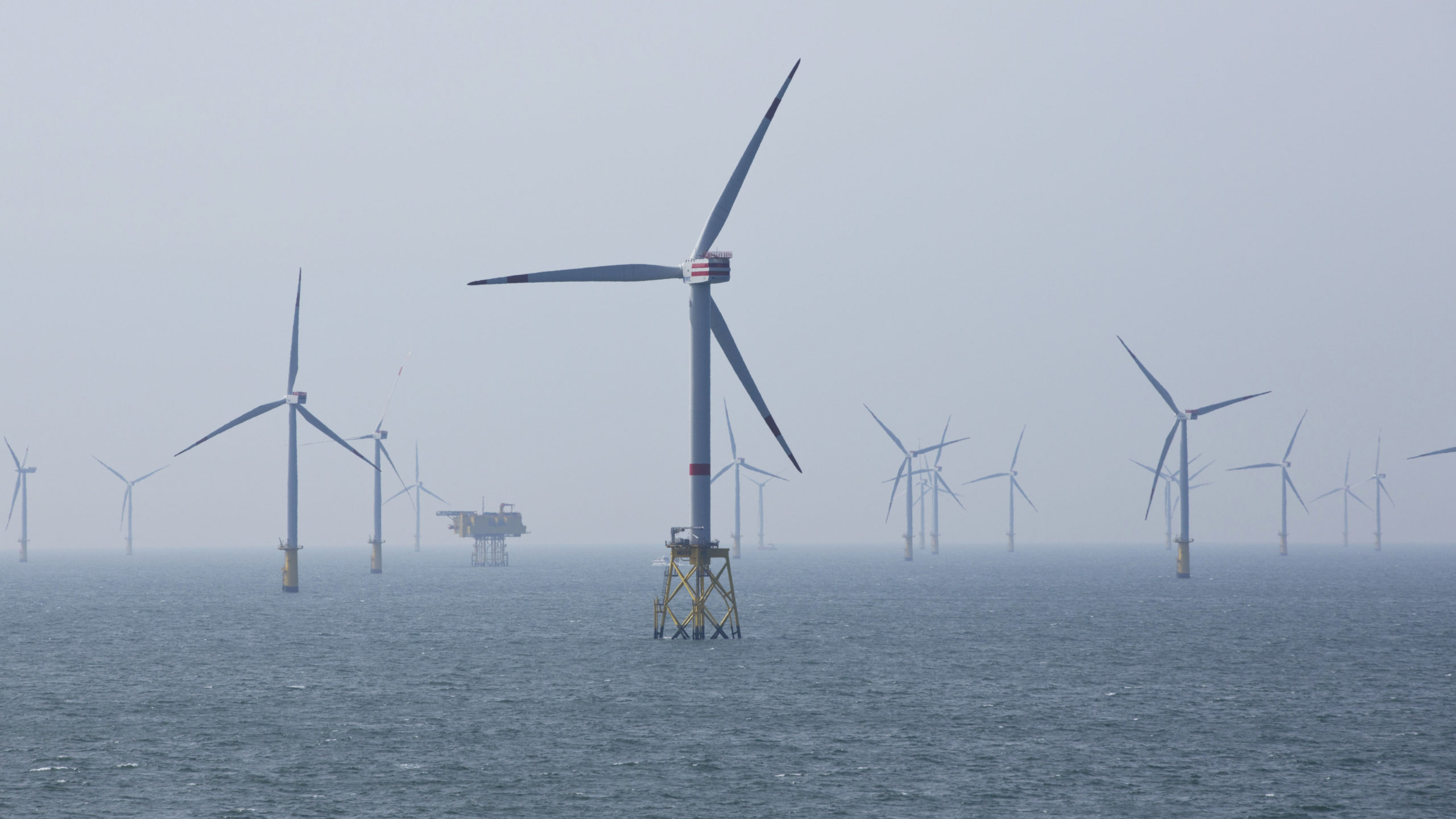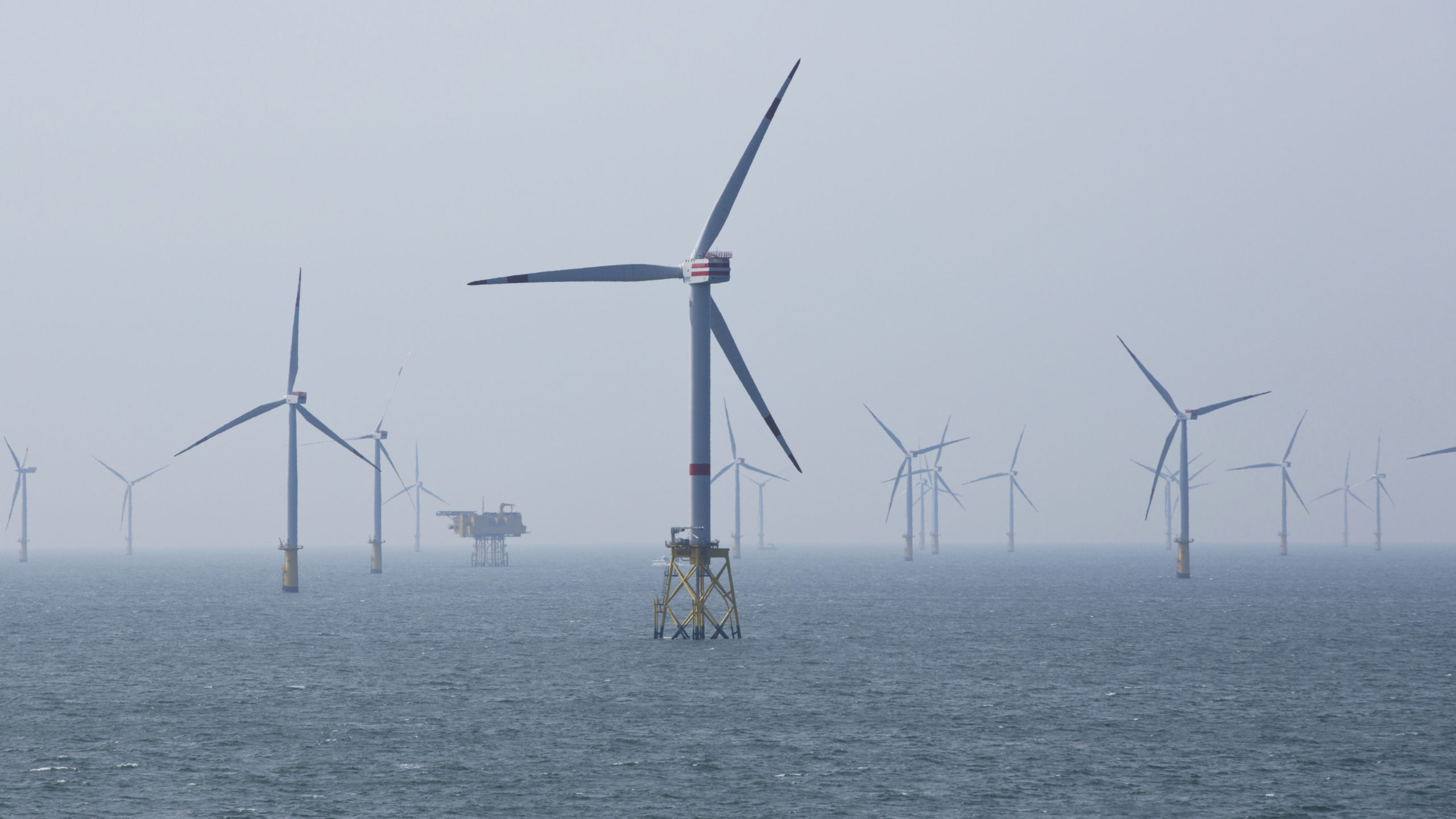
This weekend’s Capital Letter (written on Thursday and Friday) was focused on the growing energy crunch in Europe.
Today, Javier Blas, chief energy correspondent at Bloomberg News, tweets:
GAS MARKET: Another day, another record (and I lost count of how many days). European nat gas benchmarks UK NBP and Dutch TTF up ~5% on the day, trading at the equivalent of >$21 per mBtu. Since Sep 1, European gas prices are up ~20%.
Press reports have not gotten any more cheerful since I was writing last week, but a few themes remain consistent, most notably the chaos that has been introduced by adding climate-related central planning into the energy-supply mix. It was not the only cause of the current problems, but it certainly made a significant contribution to making things worse.
Natural gas and electricity markets were already surging in Europe when a fresh catalyst emerged: The wind in the stormy North Sea stopped blowing.
The sudden slowdown in wind-driven electricity production off the coast of the U.K. in recent weeks whipsawed through regional energy markets. Gas and coal-fired electricity plants were called in to make up the shortfall from wind.
Natural-gas prices, already boosted by the pandemic recovery and a lack of fuel in storage caverns and tanks, hit all-time highs. Thermal coal, long shunned for its carbon emissions, has emerged from a long price slump as utilities are forced to turn on backup power sources.
The central planners now setting the overall course of Britain’s energy policy (to be fair, they are not alone in their idiocy, but with a nominally conservative government in charge, the U.K.’s failings seem, somehow, particularly egregious) appear to be taken aback by the fact that the wind doesn’t always blow when it’s meant to — a disappointing failure on the part of specialists who supposedly spend a lot of time thinking about climate and, yes, weather. It would be wrong, I would stress, to make any argument on the basis of this fiasco to the effect that these specialists don’t know what they are doing.
Quite wrong.
The WSJ:
“It took a lot of people by surprise,” said Stefan Konstantinov, senior energy economist at data firm ICIS, of the leap in power prices. “If this were to happen in winter when we’ve got significantly higher demand, then that presents a real issue for system stability.”
Climate policy ought to be built around the need to increase resilience in the event of problems brought on by a changing climate — or, for that matter, today’s climate — not to diminish it.
Some might say that designing a system that cannot cope with (check notes) the failure of the wind to blow hard enough does not look like an example of focusing on cutting-edge resilience.
Back to the WSJ (my emphasis added):
At their peak, U.K. electricity prices had more than doubled in September and were almost seven times as high as at the same point in 2020. Power markets also jumped in France, the Netherlands and Germany.
Prices for power to be dispatched the next day rocketed to £285 a megawatt hour in the U.K. when wind speeds dropped last week, according to ICIS. That is equivalent to $395 a megawatt hour and marked a record on figures going back to 1999.
In electricity markets, the cost of generation at the most expensive supplier determines prices for everyone. That means that when countries derive power from thermal plants with comparatively high running costs, it boosts prices for the whole market. Operating costs at fossil-fuel power plants are high right now after a relentless climb in prices for gas, coal and carbon permits.
Energy prices could shoot even higher if cool temperatures stop gas stores replenishing before the period of peak winter demand, said Tom Lord, a carbon trader at U.K.-based Redshaw Advisors. “You’ve got a gas market that’s extremely tight,” he said.
Electricity, gas, coal and carbon markets have a way of feeding on one another. High gas prices prompted utilities to burn more coal, so they had to buy more emissions allowances [I discussed those allowances in the Capital Letter]. Expensive carbon permits then prodded energy companies to turn back to gas, whose price rose again because the fuel is in short supply.
The feedback loop has the potential to ripple into the broader economy. European Central Bank President Christine Lagarde this month referred to energy markets as one of the main forces driving inflation higher.
Greenflation is coming (if it has not already arrived), but “transitory” inflation is already looking more and more like an illusion.
The WSJ (my emphasis again added):
Wind accounted for about a quarter of Great Britain’s power last year, according to the system operator National Grid. After the wind dropped this month, National Grid asked Électricité de France SA to restart its West Burton A coal power station in Nottinghamshire. That won’t be possible in the future: The government has said all coal plants must close by late 2024.
Central planning is what it is. Central planners, however, are rarely focused on what really is.
Surging electricity prices have become a serious political problem for Madrid, but rising energy prices can be seen across the EU, increasing 15 per cent year-on-year in August, according to the consumer prices index.
For its part, the commission has been bullish about the economic implications of the green transition. Von der Leyen [the hopelessly inadequate president of the EU Commission, who is another part of the miserable legacy that outgoing German Chancellor Angela Merkel is leaving behind her] has called the EU’s green policy Europe’s “new growth strategy”. Simulations released as part of the commission impact assessment show the EU plan should result in a very modest change in real 2030 GDP of between minus 0.7 per cent and 0.55 per cent.
Let them eat simulations!
The Financial Times:
[A]s Jean Pisani-Ferry wrote in a Peterson Institute paper last month, the transition to net zero emissions will in reality present policymakers with “serious macroeconomic difficulties”. Households will be better off in the long run if humanity protects the climate, he said, but “in the short run their welfare is likely to take a hit, at least in comparison to trend”.
Households may be better off if humanity “protects” the climate, or they may not — at least materially — but those “serious macroeconomic difficulties” will last for a very long time indeed (with grim political consequences to match) unless there is a major course correction away from the hairshirt obsessions of those currently setting climate policy.
As I argued in the most recent Capital Letter:
The Paris approach (which will, if the Biden administration gets its way, be reflected in all its madness over here) involves a rush into technologies that are not necessarily ready for prime time, and at a remarkably reckless pace. The results will include substantial economic, social, and political damage. What would make better sense is a more gradual switch to renewables as well as increased exposure to nuclear power and more recognition that some forms of fossil fuel (natural gas) emit fewer greenhouse gases than others (when used to generate electricity, natural gas produces about half as much CO2 as coal): The perfect should not be the enemy of the good. When it comes to spending, prioritize adaptation and improved resilience. These objectives will obviously be easier to pay for if we avoid a transition that trashes the economy. The same can be said for funding the development and introduction of newer, greener energy (and other) technologies…
Sadly, that’s unlikely to happen.
As I wrote in an earlier Capital Letter:
[E]mphasizing resilience and, even more so, adaptation — which will often take place at a bottom-up level — means foregoing the opportunities to boss people around (and harvest the rewards, psychological and otherwise, that go with that) built into the command-and-control model favored by those now setting our climate agenda. That this model fits neatly with the preexisting leftist instincts of many of those advocating it is not, I reckon, a coincidence…
Nor does concentrating on resilience and adaptation follow the millenarian narrative that is an unmistakable subtext of the message now being sent out by many climate warriors, whether inside government, linked to government, or outside it. Underpinned by the expectation of apocalypse, this narrative, which has repeatedly demonstrated its dangerously persuasive power over the centuries, is based on the thought that a wicked humanity faces punishment and must, with the assistance of a morally superior, enlightened vanguard, be made to change its dreadful (often self-indulgent) behavior. Adaptation and resilience, by contrast, offer the prospect that our species will muddle on through, living pretty much as it has been doing, except even better, and without donning the hairshirt integral to so many climate warriors’ faith. Theirs has the characteristics of a religion, and there is little that is original about it. Pointless asceticism comes with the territory.
Viewed in that light, it is easy to understand why those in the West now driving our climate agenda have so little time for adaption and resilience but prefer policies that promise misery and will deliver failure — and a great strategic victory to China and other rivals, enemies that must be unable to believe their luck.

